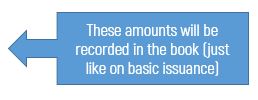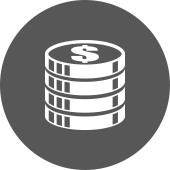Big corporations are very powerful entities that can possess more capital than some countries in the world. However, every company begins as a small start-up business. These businesses grow with the injections of capital, both from the founders and from other investors.
Going Public
 At one point, a company’s plans become so big that it needs public financing to support future development, and so they sell stock to raise the cash needed to grow. This point is when a private entity becomes public. A public corporation is financed by the ‘public’ which means millions of investors, and which means huge capital. The most significant step in creating the corporation is its registration as a legal entity. A state issues articles of incorporation to the firm that legally recognizes the status of the corporation as an independent entity. The certificate of incorporation identifies the name, address, and the field of operation of a new corporation and describes the stocks to be issued.
At one point, a company’s plans become so big that it needs public financing to support future development, and so they sell stock to raise the cash needed to grow. This point is when a private entity becomes public. A public corporation is financed by the ‘public’ which means millions of investors, and which means huge capital. The most significant step in creating the corporation is its registration as a legal entity. A state issues articles of incorporation to the firm that legally recognizes the status of the corporation as an independent entity. The certificate of incorporation identifies the name, address, and the field of operation of a new corporation and describes the stocks to be issued.
Issuing Stock to the Public
Going public is not just walking in the market and asking hundreds and millions of public investors to invest in your company. It is a long process that starts with the evaluation of the company to understand the price per share a public investor would be willing to pay.
To determine the true value of the company, it is necessary to account for all the future cash flows that will come into the company. Next, the value of the firm is divided by the number shares to be issued to determine the price per share.
Any issuance needs an efficient capital market to ensure all the shares reflect the true market value and market demand.
Efficient Capital Markets
The efficiency of a capital market is largely determined by the speed at which the fluctuations in share prices reflect the information available to the public. Investors use different news and information about the company to make their trading decisions. If this information is incorporated into the price fluctuation quickly, we can call these markets efficient. An efficient market is a fair market when companies are valued at the true price reflecting all the events and decisions the company makes. Efficient markets reward companies that are able to show good business decisions by raising the stock price, while punishing companies with bad business practices.
In contrast, inefficient capital markets have less of a connection between what is happening in the company and its stock price. This can happen if there is limited access to information, very heavy government regulations, or simply not enough buyers and sellers in the market.
Accounting for the Issuance of Shares
There are few ways of issuing that will influence the ways issuance is accounted for:
- Basic issuance (the most common)
- Issuance by subscription
- Issuance with other securities
Basic Issuance
Basic issuance is selling to the public an agreed amount of stocks and receiving cash per each of the stocks being sold. Shares constitute the company’s shared capital, which is shown under equity in accounting. Cash received from the sale of shares is an asset account. As per accounting rules, equity rises by credit and assets rise by debit. Therefore, accounting for the basic issuance happens in the following way:
| Debit | Credit | |
| Cash | Number of shares issued * share price | |
| Shared capital | Number of shares issued * share price |
Example
The company A issued 1,000,000 shares the prices of which is $23 per share. The entry will look like this:
| Debit | Credit | |
| Cash | 23,000,000 | |
| Shared capital | 23,000,000 |
Issuance by Subscription
 Issuance by subscription is the case of selling shares on ‘loan’, where investors do not have to pay the full amount at once. However, paying a part of the amount gives the investor a subscription status, which means he/she will be assigned with the particular amount of shares. This investor cannot enjoy the rights, and the shares are not officially counted and recorded as issued until the full amount is paid.
Issuance by subscription is the case of selling shares on ‘loan’, where investors do not have to pay the full amount at once. However, paying a part of the amount gives the investor a subscription status, which means he/she will be assigned with the particular amount of shares. This investor cannot enjoy the rights, and the shares are not officially counted and recorded as issued until the full amount is paid.
Example
The company A issued a subscription of 1,000,000 shares with the price of $23 per share. However, only 20% of the full amount is required as a ‘down payment’ that should be paid initially. Paying the 20% is a guarantee for the company that the investor will purchase the shares and pay the full amount on the due date. On the other side, this 20% is a guarantee for the investor that these shares are assigned to her/him. The shares issued on subscription are recorded in the books. To differentiate from the shared capital, which includes the basic issuance that is already paid, a new account for subscribed shares is created.
First, record the subscribed shares and the receivables the company is expecting to get. As per accounting rules, receivable is an asset account which increases by debit.
| Debit | Credit | |
| Subscription Receivable | 23,000,000 | |
| Shares Subscribed | 23,000,000 |
Then record the ‘down payment’- the cash that the company is getting initially. This amount we have to subtract from the expected receivables, since it is already being paid.
| Debit | Credit | |
| Cash | 4,600,000 | |
| Subscription Receivable | 4,600,000 |
When the deadline of the payment comes, the full amount is paid and shares are recorded as shared capital.
| Debit | Credit | |
| Cash | 18,400,000 | |
| Subscription Receivable | 18,400,000 |
| Debit | Credit | |
| Shares Subscribed | 23,000,000 | |
| Shared Capital | 23,000,000 |
Issuance with Other Securities
Issuance with other securities means issuing two classes of shares at the same time. Two classes usually include preferred and common classes of shares. Common shares are the traditional shares that give ownership part to the owners supported by voting rights. Preferred Shares are sometimes added into the mix of equity and debt because the preferred stakeholders usually do not have voting rights and do not participate in the company management. The name ‘preferred’ characterizes their seniority. In the case of bankruptcy and/or default, preferred stakeholders must be paid before common stakeholders and after the debt holders. This seniority is held in the distribution of dividends as well. When these two classes are issued together, the whole procedure of accounting does not change from the basic shares issuance. The only difference is to find the proportions of capital allocated to these two classes based on the market value.
Example
The company A issued 500,000 common and 500,000 preferred shares for a total of 1,000,000. The market value of preferred shares is $26 per share. The market value of common shares is $23 per share.
Market value of preferred shares: 26 * 500,000=13,000,000
Market value of common shares: 23 * 500,000=11,500,000
Total market value: 24,500,000
Then, we have to understand how much of our total price is allocated to each of the classes.
 Preferred: 13,000,000/24,500,000 * 23,000,000=12,204,081.6
Preferred: 13,000,000/24,500,000 * 23,000,000=12,204,081.6
Common: 11,500,000/24,500,000 * 23,000,000= 10,795,918.4
23,000,000
Converting Share Classes
 Preferred stock gives its shareholders the ‘preferred’ status among other shareholders. Therefore, the price per preferred share is usually higher than for a common share. However, the dividends that are paid to preferred shareholders are fixed and do not evolve with the company growth and development. This limits preferred shareholders from gaining from the company’s price growth. For this reason, it is very common for preferred shares to be convertible.
Preferred stock gives its shareholders the ‘preferred’ status among other shareholders. Therefore, the price per preferred share is usually higher than for a common share. However, the dividends that are paid to preferred shareholders are fixed and do not evolve with the company growth and development. This limits preferred shareholders from gaining from the company’s price growth. For this reason, it is very common for preferred shares to be convertible.
Convertible preferred shares are preferred shares that can be converted to a certain amount of common shares at a specific price. The number of common shares giving a preferred share is called conversion rate.
For example, if company’s conversion rate is 4, it means that preferred shareholder can get 4 common shares for each preferred. However, preferred shareholders will only convert if the common share price is higher than the conversion price.
The conversion price is an amount a preferred shareholder will pay for common shares in the conversion. So, if the investor’s preferred share costs $500, and their conversion ratio is 4, he or she will pay $125 ($500/4) for each common share. This means this investor will not convert their shares if the common stock price is less than $125, otherwise he or she is losing money.
All this information, including conversion rate and conversion price, are specified in the prospectus (a document that describes the shares) which is distributed during the issuance. At the point when common share prices become higher than conversion price, many preferred shareholders would exercise their right for conversion trying to benefit from the growth. At this point, a company has to be ready to supply common shares for the demand.
Example
The company has 500,000 preferred shares issued, with a conversion rate of 4 and conversion price of $125, and the common stock price hits $150. Let’s say 70% of preferred shareholders will exercise their right to convert: 1,400,000 common shares should be issued to enable the conversion. 70% of 500,000 shares is 350,000 shares. Thus, these 350,000 preferred shares will be converted to common by using the conversion rate: 350,000 * 4 = 1,400,000 common shares.
Paying Dividends
 Dividends are the payment the investors gain in return for their investment. Dividends can be paid monthly, quarterly, or semi-annually depending on the company’s dividend payout policy. Companies are not liable to pay out the dividends until they declare it. This means in bad years, many companies simply do not declare dividends, instead building up cash reserves. If they can, companies usually have an incentive to pay dividends, since it is a good sign of the company’s financial position that helps to raise the share price overall. This means , for most companies, dividends are paid on a regular basis. When the company declares the dividends, they become a liability for the company, and are located under dividends payable account.
Dividends are the payment the investors gain in return for their investment. Dividends can be paid monthly, quarterly, or semi-annually depending on the company’s dividend payout policy. Companies are not liable to pay out the dividends until they declare it. This means in bad years, many companies simply do not declare dividends, instead building up cash reserves. If they can, companies usually have an incentive to pay dividends, since it is a good sign of the company’s financial position that helps to raise the share price overall. This means , for most companies, dividends are paid on a regular basis. When the company declares the dividends, they become a liability for the company, and are located under dividends payable account.
The dividend yield is used to calculate the dividends payable. The dividend yield is the ratio of annual dividends per share, divided by the price per share. It is stated in the initial stage of share issuance.
Example
A company pays dividends annually and has dividend yield of 5%. It has 1,000,000 shares outstanding and the current share price is $100 per share. If the company declares the dividends, the dividends are calculated by:

Of course, dividend yields vary from one company to another. Moreover, dividend yield can be fixed, or can grow at different rates. All the details about dividends growth, periods of payments, and rates are determined by company’s dividend payout policy.